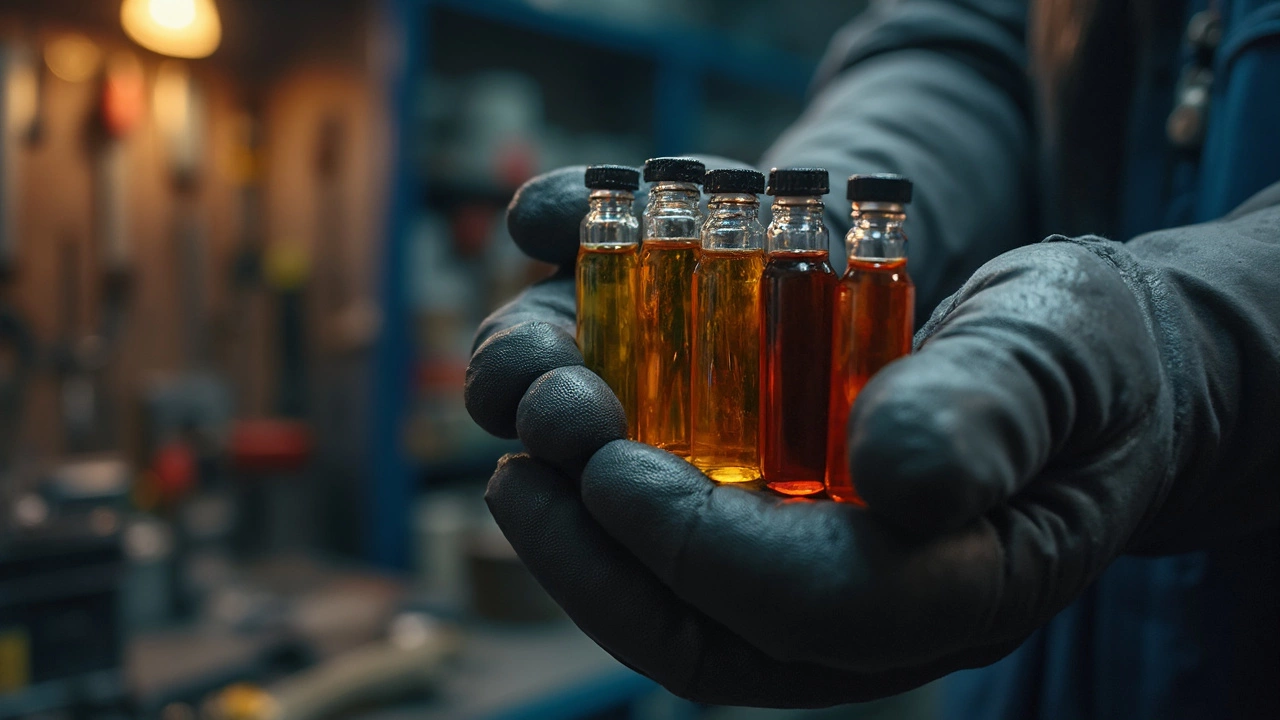Bad Oil Color Explained: Signs, Causes & Quick Fixes
If you ever pull the dipstick and see oil that looks chocolate, milky, or just plain strange, you’re probably wondering what’s wrong. Bad oil color isn’t just an eyesore – it can signal real problems that need attention fast. In this guide we’ll break down the common reasons oil changes shade, what each color tells you, and how to deal with it before your engine takes a hit.
What Different Oil Colors Mean
Fresh, clean oil is usually a clear amber. When it starts to drift away from that shade, look at the specifics:
- Dark brown or black: Oil that’s gotten old, full of grime, and losing its protective qualities. It’s a sign you’re overdue for an oil change.
- Milky or frothy: Water or coolant has mixed in. This can happen from a blown head gasket, a cracked block, or condensation that wasn’t burned off.
- Gold or light amber: Normal for newer oil, but if it’s very light and you’ve driven a long distance, the oil might be too thin for proper lubrication.
- Red or pink: Rare, but can happen if transmission fluid leaks into the engine oil – a serious issue that needs a mechanic’s look.
Spotting these shades early can save you from costly repairs.
Why Oil Changes Color
Several everyday factors can turn your oil dark or milky:
- Heat and oxidation: The hotter the engine runs, the faster oil breaks down and darkens.
- Dust and soot: Driving in dirty conditions or short trips that don’t let the engine reach full temperature leave particles in the oil.
- Moisture: Condensation builds up in the oil pan, especially after the car sits overnight. If the oil isn’t hot enough to evaporate it, you’ll see a milky film.
- Engine leaks: A leak from the coolant system or the intake can mix fluids, changing the oil’s hue.
Most of these issues are fixable with regular maintenance, but some need professional attention.
Quick checks you can do right now: Pull the dipstick after the engine is warm, wipe it clean, reinsert, then pull it again. Look at the oil’s color and texture. If it’s thick and frothy, schedule a mechanic visit within the week.
When you see dark, dirty oil, a simple oil change will usually bring things back to normal. However, if the oil is milky or you smell sweet coolant, stop driving and have the cooling system inspected.
Keeping a log of oil changes, mileage, and any odd colors helps you spot patterns. Many drivers forget to change oil until it’s almost black – that’s a recipe for engine wear.
In short, don’t ignore the dipstick. A quick glance tells you whether your engine is happy or needs help. Change the oil on schedule, watch for milky signs, and you’ll keep your car running smooth for miles.
 6 February 2025
6 February 2025
What Color is Bad Engine Oil? Understanding the Signs of Trouble
Wondering why your engine oil looks different? The color of your engine oil can tell you a lot about the health of your vehicle. From amber to dark brown, each shade might indicate something important. Learn how to interpret these signs and keep your engine running smoothly.
Latest Posts
-

Do Spark Plugs Make Engines Run Better? The Real Story
-

Do Wiper Blades Need to Be Exact Size? What Really Matters for Clear Vision
-

Can I Replace My Car Battery Myself? Step-by-Step Guide and Tips
-

Will My AC Work Better If I Change the Filter? The Real Impact of Air Filters
-

What Happens If I Don't Replace Spark Plugs?

0